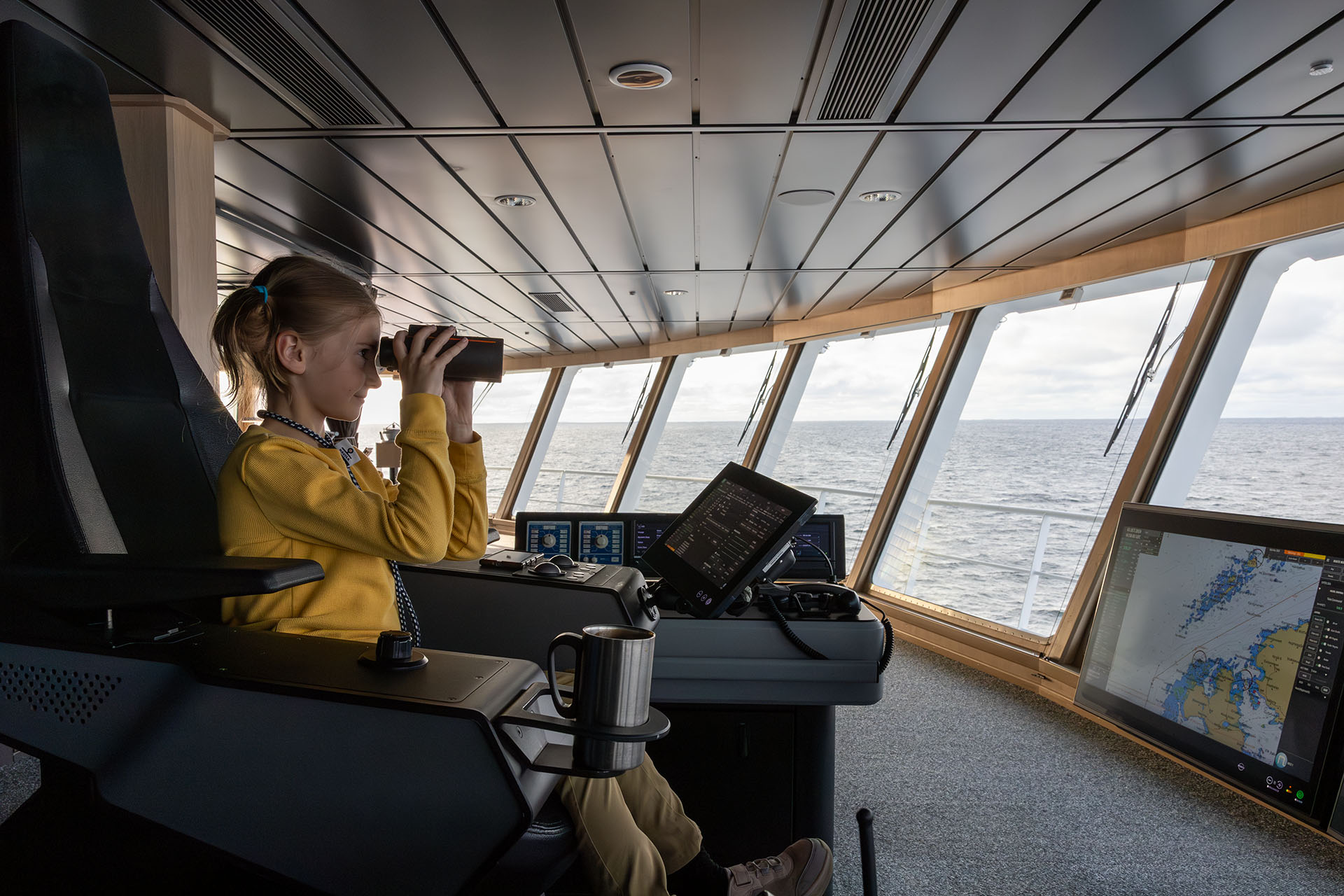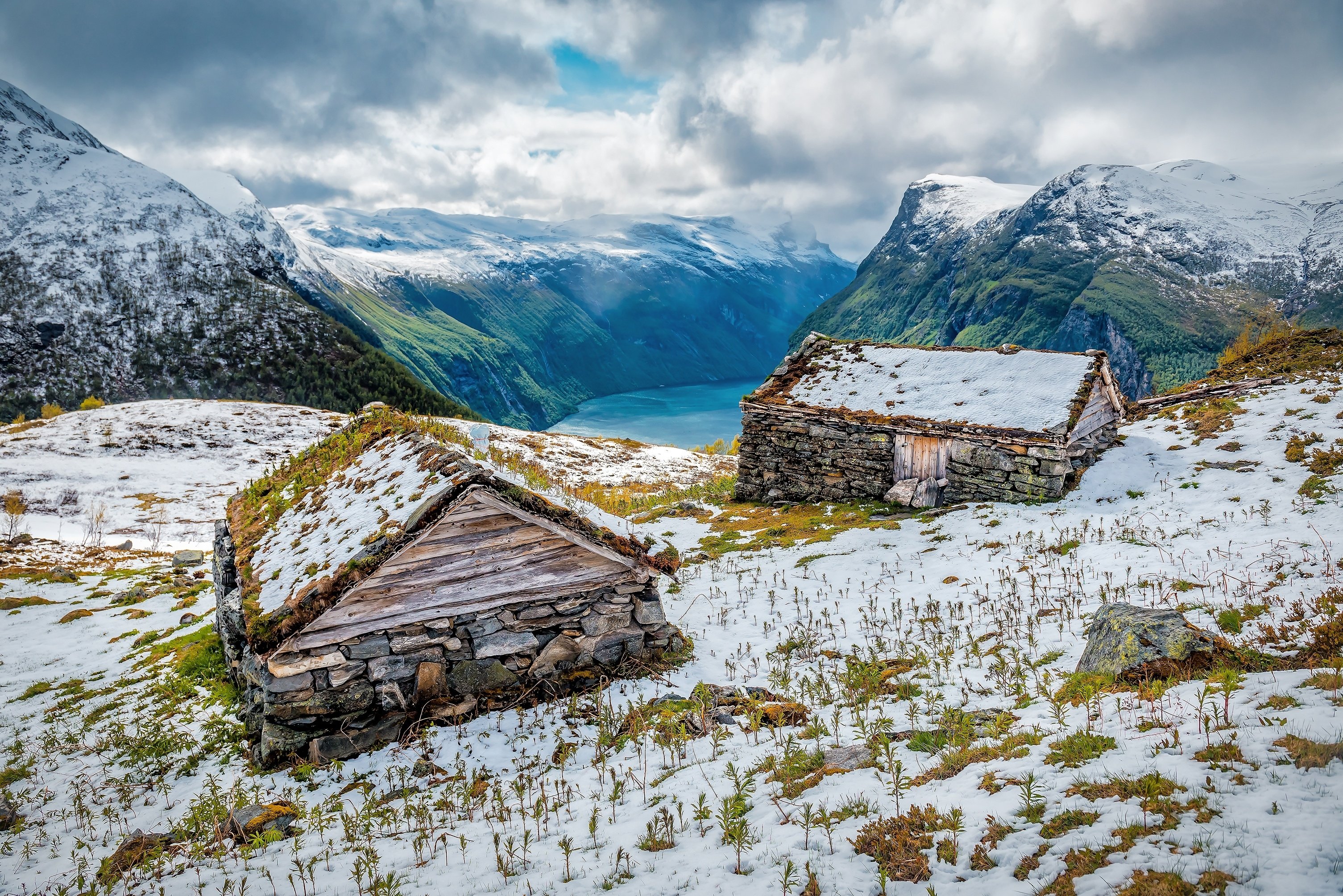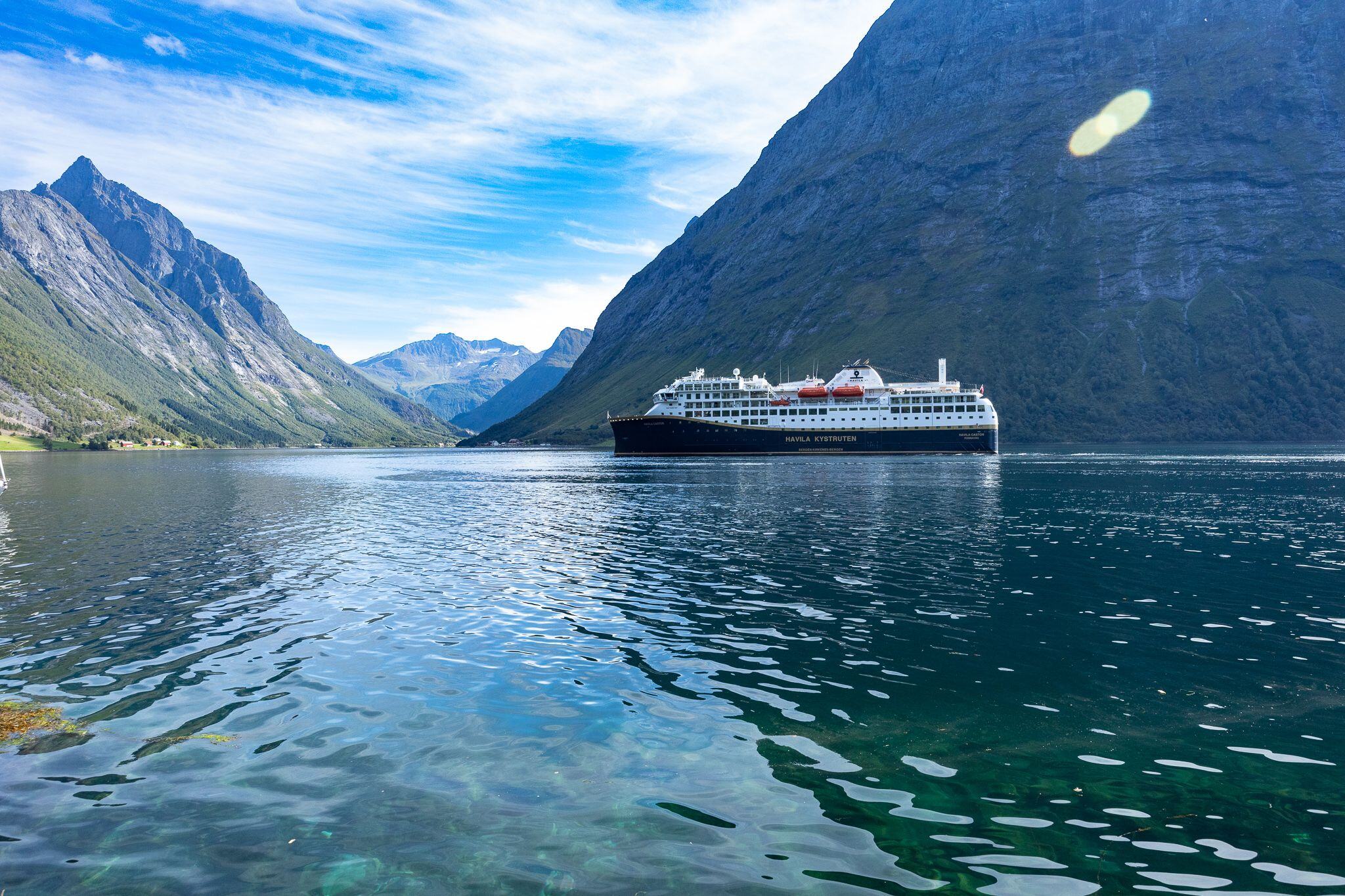On the Atlantic Road
and into a Marble Mine
The Atlantic Road is known as one of the world’s most beautiful roadways. We experienced it at its very best. Then, we went to the Bergtatt marble mine – in the center of a mountain.
Text and photos: Josefine Spiro
Norway’s Atlantic Road, which runs along the country’s northwest coast, is considered one of the most scenic roads in the world. Built in 1989, its eight bridges connect several small islands – the largest being Storeidsundet Bridge, 260 meters long and rising 23 meters above the sea. This bridge is regarded as an architectural wonder. For some people, however, it causes trepidation.
Such was the case, recounts our guide, Felicitas Kocer, from Møre and Trøndelag Guideservice, as our tour bus approaches this tall, striking bridge…
Apparently, ‘ski jump’ was the only information the passenger perceived from Felicitas’ story as the tour bus approached the Storeidsundet Bridge a few years ago.
The driver barely accelerated as they neared the top of the bridge – which did indeed look a lot like a ski jump – making the passenger, who neither spoke English nor German – nervous. Felicitas looked at the woman with a humorous glance but kept her voice serious as she said: ‘Now, it’s important that the bus driver keeps accelerating, so we are certain to make the jump ahead.
She should not have said that.
The tourist panicked, frightening other passengers as well. The guide quickly explained it was a joke – the bridge did not end half-way across the strait – and apologized to the group.
“Even though I apologized, the passenger was very angry, but it was probably worth it. After all, I now have a good story to tell”, says Felicitas Kocer.
And if there’s something she’s good at, it is telling stories. During this bus excursion, we learn a lot about the town of Kristiansund, the business life in the region, the war history of the area, and the passing scenic views.
The journey itself is an attraction. In addition, we stop at Svevestien (“the soaring path”); on Eldhus Island, close to the famous bridge.
We are not only sightseeing. Our final stop with the bus is inside a marble mine. From here, the journey continues on a steady raft floating on a 300-meter-long lake of pure spring water from the mountain interior.
The colorful lights in the water, combined with the elfin-like musical tones resonating between the rock walls, create a special, almost magical atmosphere.
The name of this place is “Bergtatt”. One of the employees, Johan, tells us that the mining operations have been a family business ever since the start in 1938. At the time, the Naas family’s marble was mainly supplied to the Norwegian and Swedish copy paper industries.
However, marble is used for far more than paper. In addition to well-known uses such as brick and other building materials, and sculptures; marble can be found in anything from plastic and rubber to toothpaste and fertilizer.
A few years ago, a part of the mountain was opened to host cultural and tourist events.
In the heart of Bergtatt, lies a concert hall with fabulous acoustics. We can only imagine what it must be like to listen to live music here. What we can do, however, is to use the hall as a cinema theater.
Johan shows us a movie explaining the mining operations. Then, he invites us to sit down at two large, round tables at which we are being served homemade beef stew and a glass of freshly-tapped spring water from the inside of the mountain walls.
This is the great hall/ concert hall at Bergtatt.
Finally, we are allowed to pick a piece of marble from the ground around the entrance of the mine.
It is a great souvenir to bring back home.
You can learn more about this excursion here.



